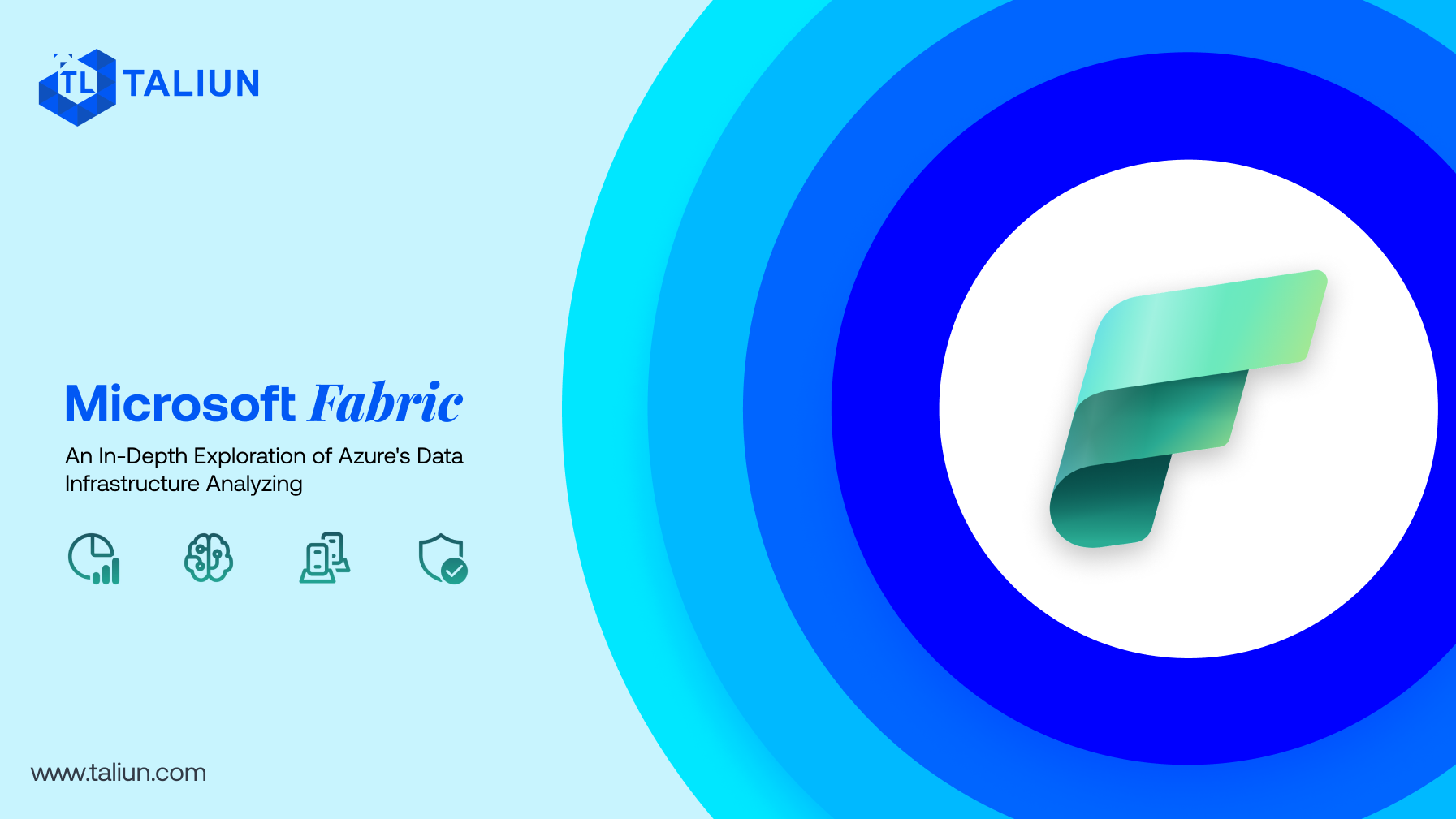Microsoft Fabric: An In-Depth Exploration of Azure's Data Infrastructure Analyzing
Microsoft's commitment to innovation is prominently on display with the introduction of Microsoft Fabric. As cloud frameworks continue to advance with unprecedented sophistication, businesses worldwide eagerly await the transformative potential of this groundbreaking offering and how it will redefine the landscape of Azure data architectures.
Microsoft Fabric: An Overview
Microsoft Fabric is the latest addition to Microsoft's impressive suite of tools and platforms within Azure. Before delving into its impact on Azure Data Architecture, it's essential to grasp its core essence.
Impact on Azure Data Architecture
The introduction of Microsoft Fabric is poised to bring subtle shifts to the Azure data architecture employed by clients. Microsoft Fabric's primary focus is to streamline data operations, ensure universal data accessibility, and enable seamless data interactions across various Azure Data and Analytics services, including Power BI and Azure ML. Consequently, businesses that have previously established their data architecture may reconsider their Data and Analytics strategies to leverage the advantages of Fabric. Positioned as a unified SaaS service extending the capabilities of Azure Synapse Analytics integration to all analytical workloads, Microsoft Fabric is gaining popularity among Azure users, even in its current Preview mode. As Microsoft Fabric transitions from Preview to General Availability (GA), its adoption is expected to soar. Furthermore, organizations contemplating the establishment or modernization of their data platforms, transitioning from non-Azure technologies to Microsoft Azure, should seriously consider embracing the Microsoft Fabric SaaS service.
Is Adoption of Microsoft Fabric Mandatory for Azure Data Customers?
Similar to most Azure services, Microsoft Fabric is not obligatory for customers with an existing Azure Data services footprint. Clients have the flexibility to choose whether to migrate their existing data architecture and services to Microsoft Fabric. Nevertheless, due to its robust features, cost-efficiency, and efficiency promises, it is rapidly becoming a preferred choice among Azure users, even in its current Preview phase. With Microsoft Fabric's progression towards General Availability, its adoption is anticipated to surge. Additionally, customers planning to establish or modernize their data platforms, transitioning from non-Azure technologies to Microsoft Azure, should strongly consider embracing the Microsoft Fabric SaaS service.
Data Architecture Considerations in Light of Azure Fabric
When devising a data architecture strategy on Azure, particularly with the imminent General Availability of Fabric, organizations must take into account:
1. Interoperability: Microsoft Fabric ensures seamless communication among different data and analytics solutions within Azure. Therefore, your data architecture should prioritize interoperability, eliminating the need for additional plumbing and costly ETL processes.
2. Scalability: With Fabric's capabilities, organizations can envision more ambitious and scalable data strategies, confident in the platform's ability to handle growth in line with Microsoft's Data service vision.
3. Flexibility: Fabric guarantees data accessibility and usability across services, necessitating a flexible architecture that accommodates cross-service operations.
One Lake and the Medallion Architecture
Microsoft's 'One Lake' philosophy, which supports the Medallion architecture, advocates for a unified data lake capable of storing and processing vast amounts of raw data. The inclusion of Fabric enhances this philosophy, benefiting the Medallion architecture with its data streamlining capabilities. Data can seamlessly transition from its basic form to aggregated states, ensuring efficient processing and analytics. Migrating the Data estate from a Medallion Architecture on Azure Data Lake to "One Lake" within Microsoft Fabric will be a smooth transition for customers.
Power BI and Microsoft Fabric: A Winning Synergy
Power BI, Microsoft's flagship business analytics tool, is poised to gain numerous advantages from Fabric, including:
1.Enhanced Data Access: Fabric enables Power BI to retrieve data from a wider range of sources, ensuring seamless data retrieval. The direct connectivity from Power BI to Delta tables in the lakehouse eliminates the need for maintaining a SQL layer, delivering substantial cost savings.
2. Real-time Analytics: Streamlined data operations enable analytics with lower latency, facilitating quicker decision-making.
3. Unified Reporting: As Fabric breaks down data silos, reports can draw data from multiple Azure services, resulting in more comprehensive reporting.
Conclusion:
While Microsoft Fabric may be viewed as an additional Azure service, its remarkable capabilities and improved efficiencies make it an essential choice for businesses. For organizations striving to transform or enhance their Azure data infrastructure, the potential of Fabric is not merely an option—it is a necessity. As we navigate the evolving landscape of cloud technology, solutions like Fabric are not mere tools; they play a pivotal role in shaping the resilient enterprises of the future.
Embrace the transformative power of Taliun and the latest innovations from Microsoft
Taliun empowers enterprises in Healthcare, Software and Digital Platforms (ISVs), Retail, and Hi-Tech to navigate their digital transformation journey by "Unleashing the Power of Azure and Generative AI."





